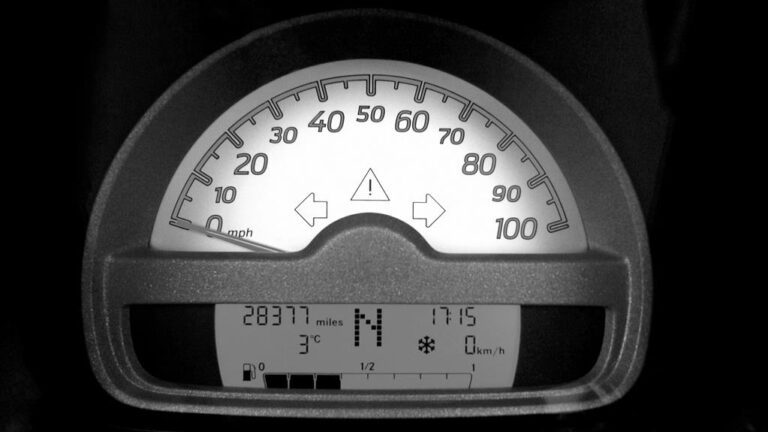Mastering Control: The Art of Electronic Stability Control Tuning
Just as a conductor masterfully orchestrates a symphony to create harmonious music, a vehicle relies on finely-tuned Electronic Stability Control (ESC) for smooth, safe operation. This article will delve into the art of ESC tuning, unraveling its complexities, exploring sensor functions, and discussing advanced techniques. We'll also tackle challenges faced in ESC tuning, providing insightful case studies and a glimpse into the future of this integral technology, guiding you towards mastery in the dynamic world of vehicle performance.
Key Takeaways
- Electronic Stability Control (ESC) is designed to enhance a vehicle's stability by detecting and reducing loss of traction.
- ESC tuning optimizes ESC parameters for superior vehicle handling and performance.
- ESC integrates with other vehicular subsystems, such as launch control, for optimal driving conditions.
- ESC tuning is an art that allows vehicles to function at their peak potential.
Understanding the Basics of Electronic Stability Control
The Electronic Stability Control (ESC) system, a crucial component in modern vehicles, is designed to enhance a vehicle's stability by detecting and reducing loss of traction. This dynamic system forms a fundamental part of electronic stability control tuning, a process that optimizes the ESC parameters for superior vehicle handling and performance.
Understanding the intricacies of the ESC system is a stepping stone towards mastering the art of performance tuning. The system integrates with other vehicular subsystems, such as the launch control system, to deliver optimal driving conditions. This intricate collaboration requires a sophisticated level of calibration, achievable through the use of performance tuning software.
Such software enables users to fine-tune the ESC system, adjusting parameters to suit specific driving conditions and styles. The result is a vehicle that performs more efficiently and responsively, offering a drive experience that is both exhilarating and liberating.
In essence, electronic stability control tuning is more than a technical process; it is an art that allows vehicles to function at their peak potential. It is a testament to the advancements in vehicle technology and the pursuit of automotive perfection. By understanding its basics, we lay the foundation for mastering this art.
The Science Behind Electronic Stability Control Systems
The science behind Electronic Stability Control (ESC) systems is rooted in an intricate interplay of mechanical and electronic components. It is essential to comprehend these underlying mechanisms to effectively tune and optimize stability control systems. Therefore, we will explore the interdependencies of these components, and how they contribute to the overall functionality of ESC systems.
Understanding Stability Control Systems
An understanding of electronic stability control systems necessitates a deep dive into the scientific principles that govern their operation. These principles are rooted in the physics of motion and the mathematics of control theory. They are applied through sophisticated hardware and software components, including launch assist technology and data logging systems.
The crucial components of these systems include:
- Sensors: These detect variables like wheel speed, steering angle, and lateral acceleration.
- Control Unit: This interprets sensor data and decides when and how to intervene.
- Actuators: These execute the control unit's decisions, adjusting brake pressure or engine power as needed.
Understanding these systems is a complex task, requiring a blend of technical knowledge and practical experience. With this foundation in place, we can transition into the next section, where we will delve deeper into the mechanics of electronic stability control systems.
Electronic Stability Control Mechanics
In this section, we will explore five major elements of Electronic Stability Control (ESC) mechanics and their interplay, and we will also examine how these elements contribute to the overall performance and safety of a vehicle. The ESC systems operate through a complex interaction of sensors, actuators, control units, and software algorithms.
Here's a simple three-column table that outlines the essential components of ESC, their functions, and their impacts on vehicle performance:
| Component | Function | Impact on Vehicle Performance |
|---|---|---|
| Sensors | Detect vehicle dynamics | Influence vehicle response |
| Actuators | Control vehicle movement | Enhance vehicle stability |
| Control Unit | Process sensor data | Optimise vehicle control |
| Software Algorithms | Determine control strategies | Improve driving safety |
Understanding these mechanics can help drivers liberate their cars' potential while maintaining safety.
The Role of Sensors in Electronic Stability Control
Undeniably, sensors play an integral role in the precise and efficient functioning of Electronic Stability Control (ESC) systems. They are the fundamental conduits through which critical data is collected, processed, and utilized to maintain stability and safety in a wide range of vehicular operations.
Data gathered by sensors is continuously fed into the ESC system's central control unit. This information is used to calculate the car's status in real-time and make necessary adjustments to the vehicle's trajectory. This dynamic process requires a range of specialized sensors, each responsible for capturing specific data points.
- Wheel-speed sensors: These monitor the rotational speed of each wheel, offering crucial data to detect if a wheel is about to lock up or spin out of control.
- Steering angle sensors: These ascertain the driver's intended direction, providing a reference point for the ESC system to compare against the vehicle's actual path.
- Lateral acceleration sensors: These measure the side-to-side forces acting on the vehicle, enabling the ESC system to determine if the car is understeering or oversteering.
How to Adjust Electronic Stability Control for Different Conditions
Adjusting Electronic Stability Control (ESC) to suit a multitude of driving conditions requires a comprehensive understanding of various factors including, but not limited to, vehicle dynamics, sensor data interpretation, and the driver's behavior. The art of ECS tuning primarily revolves around manipulating the control algorithm parameters for different inputs, accounting for changes in vehicle speed, steering wheel angle, and lateral acceleration.
In dry conditions, for instance, the ESC system might allow for a greater steering input before intervening, whereas in wet or icy conditions, intervention might occur earlier to prevent slippage. The calibration process demands an analytical approach, with meticulous attention to sensor data, aiming for optimal vehicle stability and performance under diverse circumstances.
Adjustments should also account for the driver's behavior. A more aggressive driver might benefit from a less intrusive ESC setting that allows for more vehicle dynamics, while a novice driver might require a more conservative setting. The liberation in this context lies in providing a safe, yet engaging driving experience for various driver skill levels and varying road conditions. ESC tuning, therefore, is a delicate balance of safety, performance, and driver comfort.
The Impact of Electronic Stability Control on Vehicle Performance
Electronic Stability Control significantly influences vehicle performance and handling, and its proper tuning can enhance both safety and driving experience. This system works by detecting and reducing loss of traction (skidding), thereby improving the vehicle's directional stability.
ESC's impact on vehicle performance can be broadly categorized into three aspects:
- Enhanced Safety: By automatically applying brakes to individual wheels, ESC can help the driver maintain control of the vehicle, particularly in situations where the vehicle might otherwise skid, such as when navigating slippery surfaces or during sudden, evasive maneuvers.
- Improved Handling: ESC can improve the vehicle's handling by ensuring that the vehicle's trajectory matches the driver's intended direction, especially in scenarios like hard cornering, where the vehicle could otherwise spin out.
- Optimized Performance: By regulating the engine's power output and selectively applying brakes, ESC can optimize the vehicle's performance, contributing to a smoother, more controlled driving experience.
Ultimately, proper tuning of the ESC system is crucial. If tuned effectively, it can significantly augment vehicle safety and performance, fostering a liberating and enjoyable driving experience.
Practical Tips for Fine-Tuning Electronic Stability Control
As we delve into the practical aspect of this discussion, it is essential to note that fine-tuning Electronic Stability Control (ESC) requires both technical knowledge and practical experience. The use of proper tools, understanding of the vehicle's dynamics, and the capacity to interpret data accurately are all critical in this process.
Here are some practical tips for fine-tuning ESC, summarized in the table below:
| Principle | Application |
|---|---|
| Understand the system's architecture | Study the ESC system's layout, components, and functionality to grasp the fundamentals. |
| Analyze data | Use telemetry data to analyze vehicle performance and detect potential issues with ESC. |
| Test under varied conditions | Test the ESC system under different driving conditions to assess its performance and make necessary adjustments.
Understanding the architecture of the ESC system helps you comprehend how it interacts with other vehicle components. Analyzing data from different sensors provides insight into the vehicle's performance and potential issues with ESC. Testing under varied conditions allows you to adjust the ESC system to perform optimally under diverse driving circumstances. Remember, the goal is to enhance safety without compromising the vehicle's performance and drivability. Liberation in this context involves the freedom to maneuver and control the vehicle under any scenario.
Advanced Techniques in Electronic Stability Control Tuning
In the realm of Electronic Stability Control (ESC) tuning, advanced techniques offer a more refined approach to system optimization. This section will focus on an exploration of these sophisticated tuning techniques, coupled with strategies to enhance system performance. A detailed analysis of these methodologies will provide a comprehensive understanding of how they contribute to superior handling and stability in a variety of challenging driving scenarios.
Tuning Techniques Exploration
Delving into the realm of advanced techniques, the exploration of tuning techniques for Electronic Stability Control (ESC) presents a complex yet rewarding challenge for automotive engineers. They're tasked with the job of fine-tuning these intricate systems to ensure maximum efficiency and safety for vehicle users.
- Parameter Optimization: Engineers manipulate ESC parameters, such as slip ratio and yaw rate, to enhance vehicle stability. This requires a deep understanding of vehicle dynamics and control theory.
- Model Predictive Control (MPC): MPC algorithms are used to predict vehicle behavior and adjust ESC actions accordingly, striking a balance between performance and safety.
- Machine Learning: Machine learning algorithms can be employed to automatically tune ESC systems, learning from past experiences and improving over time.
These techniques demand a high level of expertise but promise significant improvements in ESC functionality, empowering engineers to pioneer safer and more efficient vehicles.
Performance Improvement Strategies
Before exploring the advanced techniques in Electronic Stability Control (ESC) tuning, it is crucial to understand the performance improvement strategies, and how they can significantly enhance the efficiency and safety of a vehicle. Key strategies include fine-tuning the ESC sensors, such as the yaw rate and steering angle sensors, for optimum response time and accuracy. This process involves complex algorithms and precise calibration. Furthermore, integrating advanced control strategies like feed-forward and feedback control loops can substantially improve system performance. These techniques help predict and correct deviations, ensuring smoother vehicle behavior. Lastly, the use of model-based design tools for system identification and controller tuning enables precise simulation and testing, drastically improving the ESC system's performance and safety.
Common Challenges in Electronic Stability Control Tuning
Navigating through the complexities of electronic stability control tuning, professionals often encounter a myriad of common challenges. These challenges arise from factors such as the dynamic nature of vehicle behavior, the sensitivity of the tuning process, and the intricate interconnectedness of various vehicle systems.
The common challenges include:
- Dynamic Vehicle Behavior: The behavior of vehicles is influenced by varying factors such as load, speed, and road conditions. This dynamic nature of vehicle behavior makes the stability control tuning process complex and challenging.
- Sensitivity of Tuning Process: The electronic stability control system is sensitive to slight changes in parameters. Achieving the optimal balance of control and responsiveness demands precision and a deep understanding of the system dynamics.
- Interconnected Vehicle Systems: The electronic stability control system interacts with multiple vehicle systems. Thus, changes to one system can inadvertently affect the performance of the stability control system, adding to the complexity of the tuning process.
These challenges call for a comprehensive understanding of vehicle dynamics and control systems, along with a methodical approach to tuning. In the following section, we explore 'Case Studies: Successful Electronic Stability Control Tuning', where we delve into instances of successful navigation through these complexities.
Case Studies: Successful Electronic Stability Control Tuning
Exploring successful instances of Electronic Stability Control (ESC) tuning offers valuable insights into best practices and techniques. Three notable examples from the automotive industry, including Mercedes-Benz, Tesla, and BMW, illustrate the efficacy of expertly tuned ESC systems. These case studies will be analyzed, detailing their specific tuning methods and the resulting performance enhancements.
Mercedes-Benz ESC Success
Consistently, Mercedes-Benz has demonstrated remarkable success in the field of Electronic Stability Control tuning, as evidenced by numerous case studies. Their commitment towards enhancing driving safety through state-of-the-art ESC tuning has produced vehicles that offer superior control and stability even under the most challenging conditions.
The following case studies illustrate Mercedes-Benz's mastery in ESC tuning:
- The Mercedes-Benz S-Class: Through advanced ESC tuning, the S-Class provides unparalleled stability, even at high speeds. This enhances the overall driving experience and reduces the risk of accidents.
- The Mercedes-Benz CLA: Exceptional ESC tuning in the CLA ensures a smooth ride even on uneven terrain, improving driver comfort and safety.
- The Mercedes-Benz E-Class: The E-Class boasts advanced ESC systems, tuned to perfection, ensuring optimal vehicle control, irrespective of weather conditions.
These case studies exemplify Mercedes-Benz's commitment to safety and their technological prowess in ESC tuning.
Tesla's Tuning Triumph
In our examination of successful Electronic Stability Control tuning, we now turn our attention to Tesla, a company that has not only met the industry's challenges, but also exceeded them through innovative and efficient tuning strategies. Tesla's triumph in ESC tuning has been largely due to their software-centric approach, allowing for constant updates and improvements.
| Case Study | Key Success Factors |
|---|---|
| Tesla Model S | Over-the-air software updates, precise motor control |
| Tesla Model 3 | Enhanced traction control, regenerative braking |
| Tesla Model X | Torque vectoring, advanced autopilot features |
These case studies illustrate the intricate balance between safety and driving dynamics that Tesla has mastered, enabling a liberating driving experience. This is a testament to Tesla's commitment to innovation, setting a new standard in ESC tuning.
BMW's Stability Mastery
Both the BMW M series and X series have demonstrated exceptional mastery in electronic stability control tuning, employing a blend of hardware and software solutions that has yielded significant safety and performance enhancements.
- The M series' Dynamic Stability Control (DSC) system uses sensors and software algorithms to detect and counteract oversteer and understeer.
- BMW's xDrive in the X series balances torque between the front and rear wheels, ensuring optimal traction.
- The Active M Differential in M series models dynamically distributes torque between the rear wheels, enabling precise control even at high speeds.
Each of these systems showcases BMW's innovative approach to stability control tuning, leveraging technology to improve vehicle safety and performance. As we explore the future developments in electronic stability control technology, BMW's mastery provides a promising benchmark.
Future Developments in Electronic Stability Control Technology
Several advancements are anticipated to revolutionize the realm of Electronic Stability Control (ESC) technology in the next decade. One of these is the integration of Artificial Intelligence (AI) into ESC systems, which could potentially make them more adaptive and intuitive. This AI-based ESC can learn from previous driving patterns and refine its control algorithms accordingly, promising enhanced vehicle stability and safety.
Another anticipated development is the incorporation of Vehicle-to-Vehicle (V2V) communication, enabling ESC systems to exchange real-time data with other vehicles. This interconnectivity could enhance the ability of ESC to predict and respond to potential stability threats, thereby improving the overall driving experience.
Moreover, advancements in sensor technology are also expected to significantly impact ESC. High-precision sensors could provide more accurate data on vehicle dynamics, enabling the ESC system to react more quickly and accurately to stability threats.
Lastly, the emergence of autonomous vehicles is set to redefine the function and complexity of ESC systems. As these vehicles evolve, so too will the ESC systems within them, becoming more intricate and integral to vehicle operation. The future of ESC technology holds great potential, with these advancements promising to elevate its function and effectiveness to unprecedented levels.
Frequently Asked Questions
What Is the Average Cost of Installing an Electronic Stability Control System in a Vehicle?
The cost of installing an Electronic Stability Control system varies significantly based on vehicle type and system complexity, typically ranging between $250 to $500 for aftermarket systems, excluding labor charges for professional installation.
Can Electronic Stability Control Systems Be Installed in Any Type of Vehicle?
While most modern vehicles can accommodate electronic stability control systems, the feasibility largely depends on the vehicle's existing architecture. Thorough analysis is necessary to determine the compatibility with specific makes and models.
What Are Some Notable Manufacturers of Electronic Stability Control Systems?
Notable manufacturers of electronic stability control systems include Bosch, Continental AG, Autoliv, TRW Automotive, and WABCO. These companies are renowned for their advanced technology and significant contributions to vehicle safety advancements worldwide.
How Does the Electronic Stability Control System Affect the Fuel Efficiency of a Vehicle?
The Electronic Stability Control (ESC) system can indirectly influence fuel efficiency. ESC regulates engine power and braking during critical driving situations, potentially leading to better fuel economy through optimized vehicle performance and reduced tire wear.
Are There Any Legal Requirements or Restrictions Related to Electronic Stability Control Systems in Vehicles?
Yes, there are legal requirements for electronic stability control systems. In many countries, it is mandatory for new vehicles to be equipped with this system to enhance safety and prevent accidents caused by skidding.
Conclusion
In conclusion, electronic stability control tuning represents a significant milestone in vehicle safety and performance. The future holds promising advancements in this field, with a potential to turn the tide for automotive control systems. However, challenges persist and require meticulous attention. Mastering this art not only enhances vehicle performance but also contributes to safer driving conditions, proving that the proof of the pudding is indeed in the eating.







